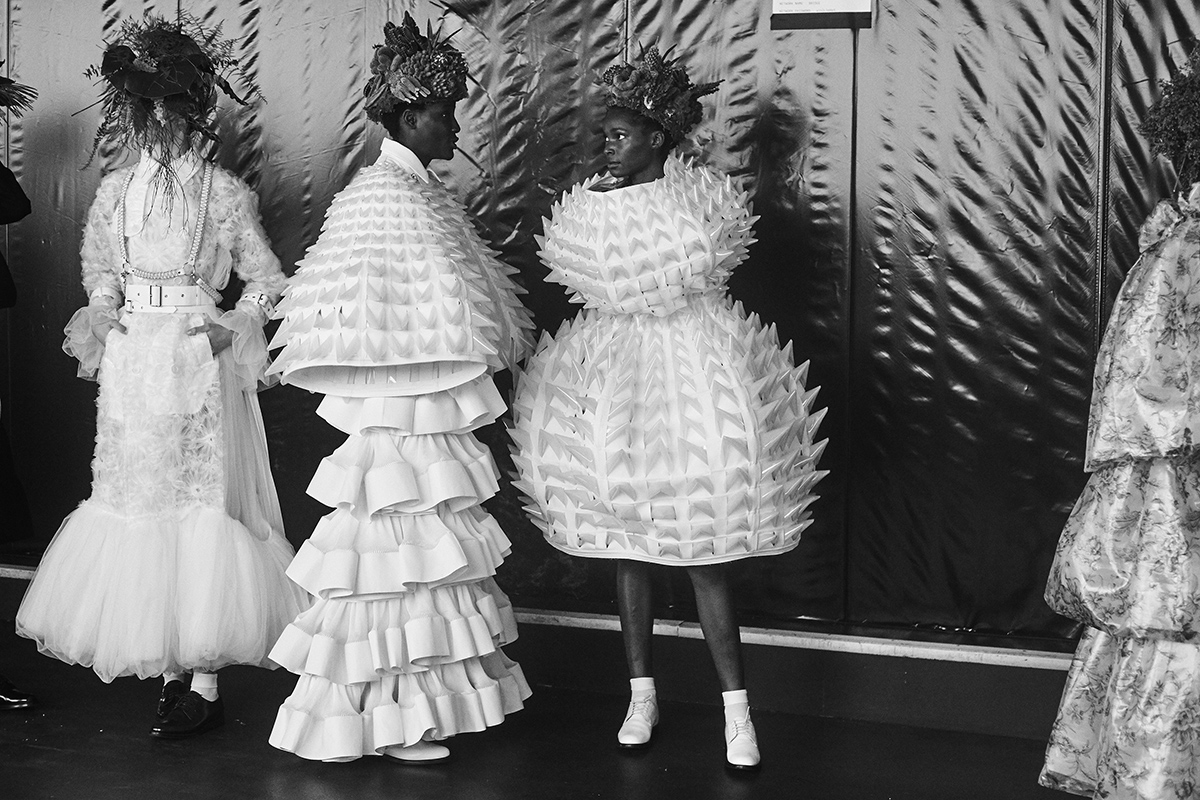
Various looks from the Noir Kei Ninomiya SS20 show, with headpieces by flower artist Azuma Makoto
The weird and the wonderful come together in the extravagant creations of fashion designer and Comme des Garçons protégé, Kei Ninomiya. Harriet Quick gets to the heart of the extraordinary imagination that produces such challenging yet enthralling designs
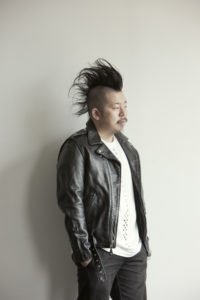
Kei Ninomiya
First encounters with designers can leave strong impressions. So, visiting the Comme des Garçons showroom on the Place Vendôme in the heart of Paris and finding Noir’s founder Kei Ninomiya engulfed by one of his voluptuous, frilly topiary tulle creations, laughing and eyes glittering remains a portrait of joy. Wearing his trademark leather jacket, Mohawk and wispy sage-like beard, Ninomiya is a rebel with a cause. “I wanted to create a collection of this time, one driven by pure creation, something new and green,” he said, surrounded by gigantic bouffant gowns and headgear fashioned from live cacti, moss and Boston ferns.
Follow LUX on Instagram: luxthemagazine
Two mannequins are dressed in what could be best described as chandelier gowns made out of handmade chain-linked Perspex pieces cut to resemble giant snowflakes and cacti headpieces made by his collaborator, flower artist Azuma Makoto. The two flapper girls seemed to have been jettisoned from 1920s Paris and reborn via Ninomiya’s fertile imagination. On the rails, huge gowns fashioned from myriad hand-linked tulle flowers invite one to plunge an arm into the innards of the bizarre garments. Elsewhere, black leather harnesses encage a rippling tulle dress alongside a cocooning number crafted from dense clusters of wool, Cellophane nylon and tulle in shades of green.
Fashion design is a rare skill that relies on a sense of prescience. We talk about living in harmony with nature but Ninomiya pushes the aspiration du jour to a surreal, immersive extreme in his spring/summer 2020 collection. Noir’s work engulfs, terrifies and delights in equal measure. Imagine a future world where you could grow your own dress and morph into some kind of a supernatural eco-being or pull a cloud from the sky and wear it or emerge from the sea in a flamboyant seaweed number? That the showroom sits slap bang opposite the newly restored manicured splendour of The Ritz adds another layer of weirdness.
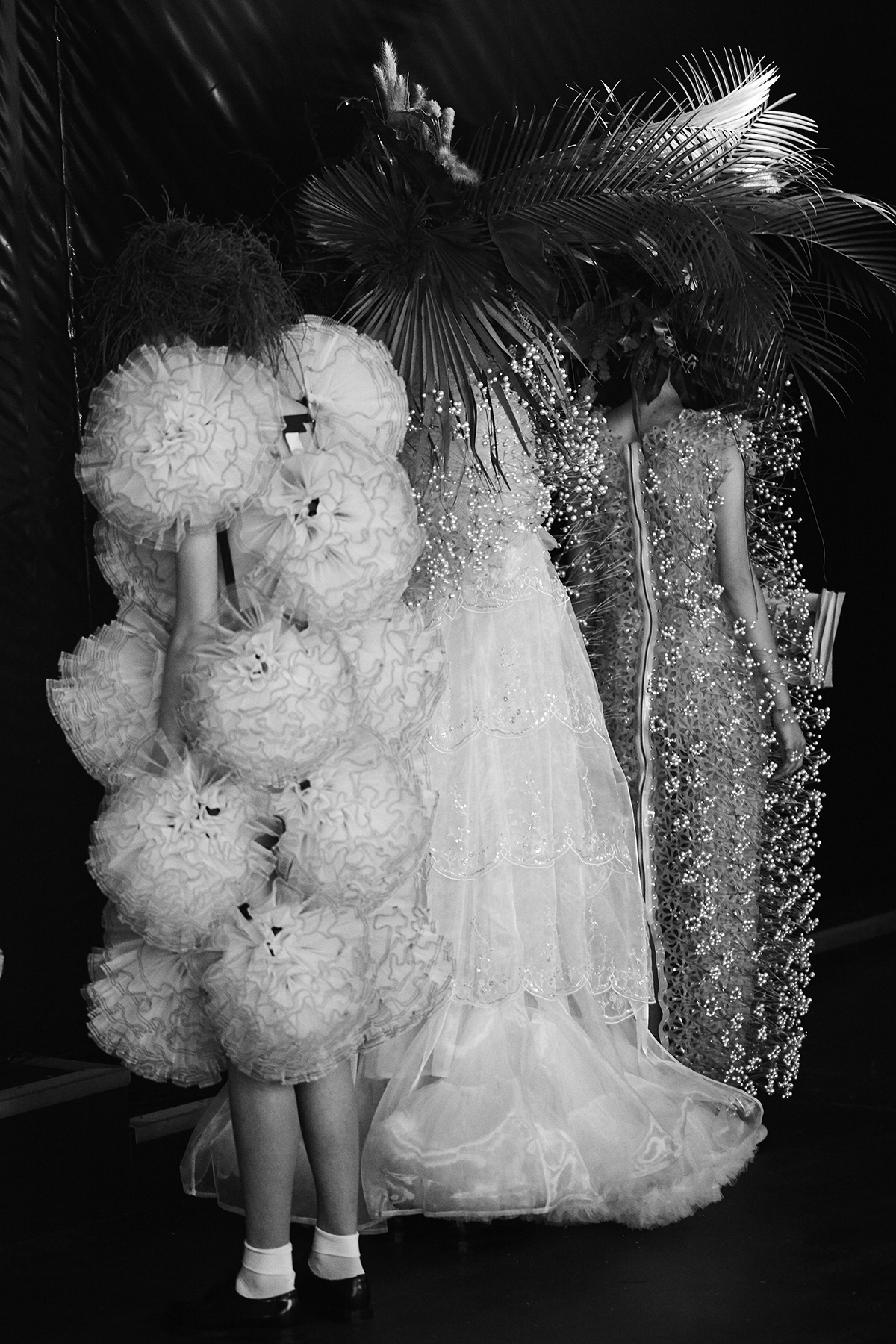
Backstage at the Noir Kei Ninomiya SS20 show in Paris
Yet Ninomiya, who receives praise and attention bowing and clasping his hands in humility, is not given to explanation. Like his mentor Rei Kawakubo, for whom he began working in 2008 as a pattern cutter at the age of 24, he studiously avoids meaning. Ninomiya wants Noir to speak for itself through the performance-like Paris collections (spring/summer 2020 is the fourth), in-store presentations and, poignantly, when worn IRL.
The meticulous, ingenious engineering of his garments (stitches are rarely used) and the compulsive viscerality (touch, bounce, rustle, clink, stroke) speak louder than words. His shows frequently leave even seasoned critics discombobulated and enthralled. “I wouldn’t want to explain any message in my collections,” says Ninomiya when pressed on the connection between fashion and the environmental crisis. “I always look to create powerful and beautiful collections. As a result, they may link with the power of nature,” he concludes.
Yet brilliant designers, particularly those backed and incubated by Comme des Garçons (CdG), one of the most influential fashion houses of our time, do not create in isolation. They are plugged into the pulses, anxieties and aspirations of everyday life. Right now, issues to do with nature and ecology are triggering a swell of angst across the globe. In reaction, there’s a return to small-batch production, a renewed appreciation of the handmade and a quest for individualism and diversity. Noir seems to be capturing all those currents. For Ninomiya the process is instinctive. “I was first attracted to fashion and to making as a means of expressing ideas,” says the thirty-five-year-old who grew up in the southern Japanese city, Ōita.
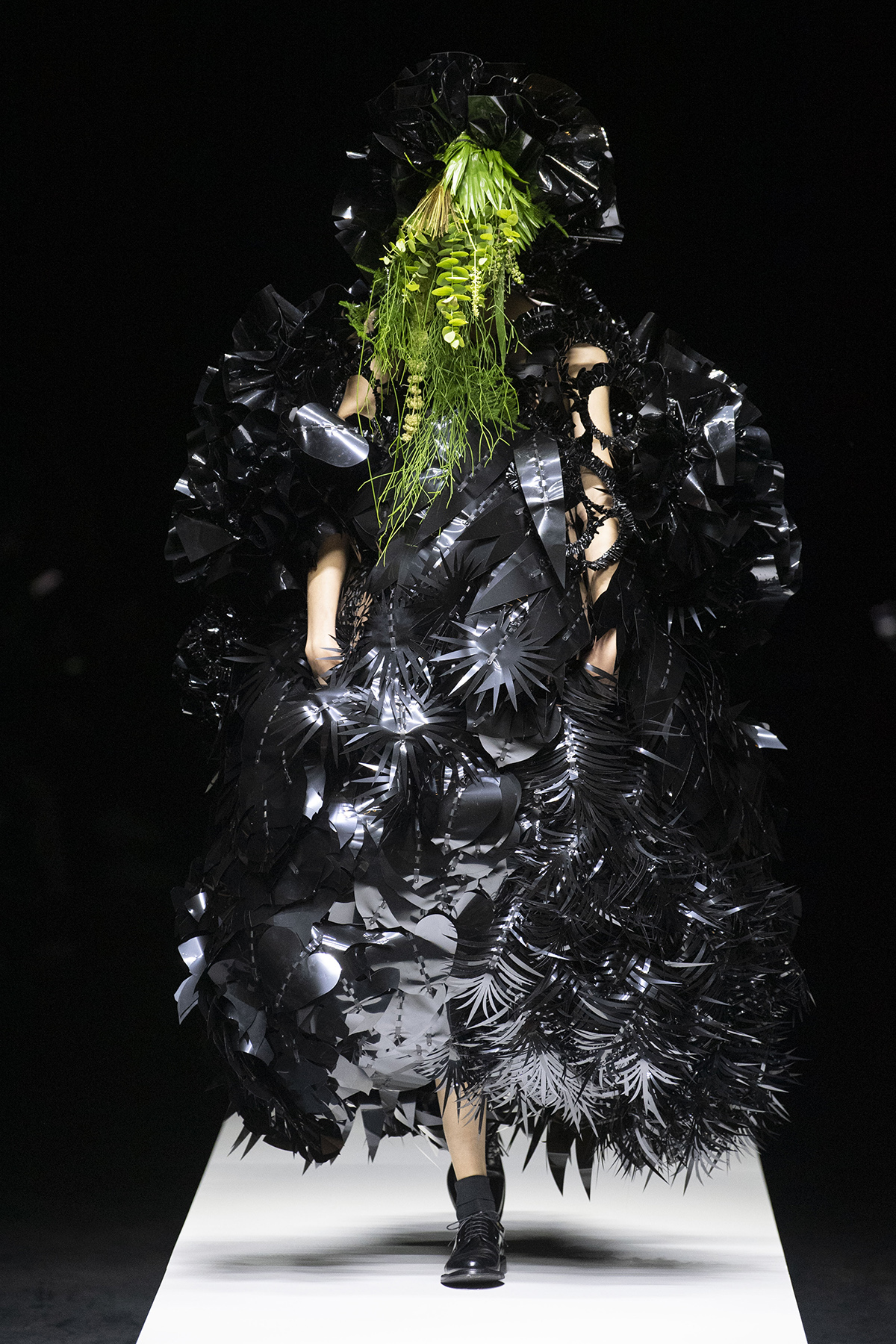
Noir’s SS20 collection on the runway in Paris
Fashion’s relationship to the planet came into sharp relief at the close of 2019. The spring/summer fashion season came slap in the centre of a global climate-crisis awareness campaign, with Greta Thunberg (in flaming pink) thundering at the United Nations, Extinction Rebellion staging protests at the Victoria Beckham spring/summer 2020 show in London, and Oxfam joining forces with stylist Bay Garnett and model Stella Tennant to urge everyone to up-cycle their wardrobes for the month of September. Kering-owned Gucci announced its commitment to going carbon neutral by offsetting its environmental footprint with reforestation. Material scarcity, climate change and the awareness of excess landfill and wardrobes bulging with unworn clothes placed a spotlight on the business and fell heavily on every fashion lover’s conscience.
Read more: The Thinking Traveller’s Founders Huw & Rossella Beaugié on nurturing quality
Some brands charged towards up-cycling initiatives, others re-examined minimalist, timeless aesthetics, and many took nature and naturalism as a guiding aesthetic or motif. Whichever direction was taken, it was evident that the fashion business at large was experiencing some kind of existential crisis. Yet indirectly and subversively, the Noir collection offered solace and optimism in the face of crisis.
Ninomiya and his small team use man-made and natural fabrics, vegan and real leather but the vision is brilliantly of now. “We employ handicraft to achieve what conventional sewing cannot do, like making volumes or using the construction techniques that we use here. Some collections start with exploring the technical aspects, but it’s different every time. This time round, I began with an image,” he says. As regards the engulfing volumes, Ninomiya remarks: “I haven’t really thought about it. I just follow my principle to make something powerful and beautiful, so the pieces often end up being big in size and volume.”

A look from the Noir Kei Ninomiya SS20 show
It seems the more banal and mundane the middle market of fashion becomes, the more outrageous and unpredictable the true creators will be. Ninomiya has one of those rare spatial imaginations, like an architect, that is capable of creating new forms with unconventional methods. Techniques might include chain linking (beloved of sixties entrepreneur, Paco Rabanne), invisible snapper and tab fastenings, grommets and rivets. The construction methods actually create the decorative effects as well as the structure. Peer inside a Noir piece and you will be astonished to see an inner matrix that resembles a molecular science model.
The craft/tech/engineering route gives Noir clothes a sense of substance and newness and plays into Japan’s rich tradition of technical innovation that supercharged the country’s economy in the post-war years and made the nation a subject of fascination and fetishisation in the 1980s. That was when Rei Kawakubo dropped a bombshell on the bourgeois traditions of Paris couture with her thunderbolt 1982 Holes collection of deconstructed, raw-edged gowns worn by androgynous waifs. Here was an unknown Japanese designer suggesting that frayed fabrics and bag-lady layers were the apex of style. Intellectual circles were quick to adopt the controversial look. Nearly two generations of designers have been inspired by the impact of Kawakubo’s radical work. We have come to expect experimentation, innovation and rigorous quality from a country that still values and rewards its true artisans.
Read more: French designer Philippe Starck’s vision of the future
Ninomiya grew up in the 1990s. After studying French literature, he moved to Europe to attend the prestigious Royal Academy of Fine Arts in Antwerp. During a holiday period, he returned to Japan and applied for a job in the CdG studio. Kawakubo was impressed by the young designer’s meticulous work and hired him. Ninomiya never finished his studies in Antwerp and worked in the studio for the next four years before Kawakubo invited him in 2012 to launch his own line under the company umbrella. International acclaim slowly grew with his move to Paris in 2015 and now invitations to his shows are among the most sought after.
To put Noir in context, it helps to understand the bigger Comme des Garçons International universe that is run by Kawakubo and president and partner, Adrian Joffe. It expands across several CdG labels, including accessories and the extensive perfume range, Ninomiya’s fellow protégé Junya Watanabe, and Noir (since 2012). CdG also operates as an investor, backing labels including Gosha Rubchinskiy and helping with distribution and production. Youths in Balaclava, (designed by a collective of polymath twenty-somethings from Singapore) is the latest launch.
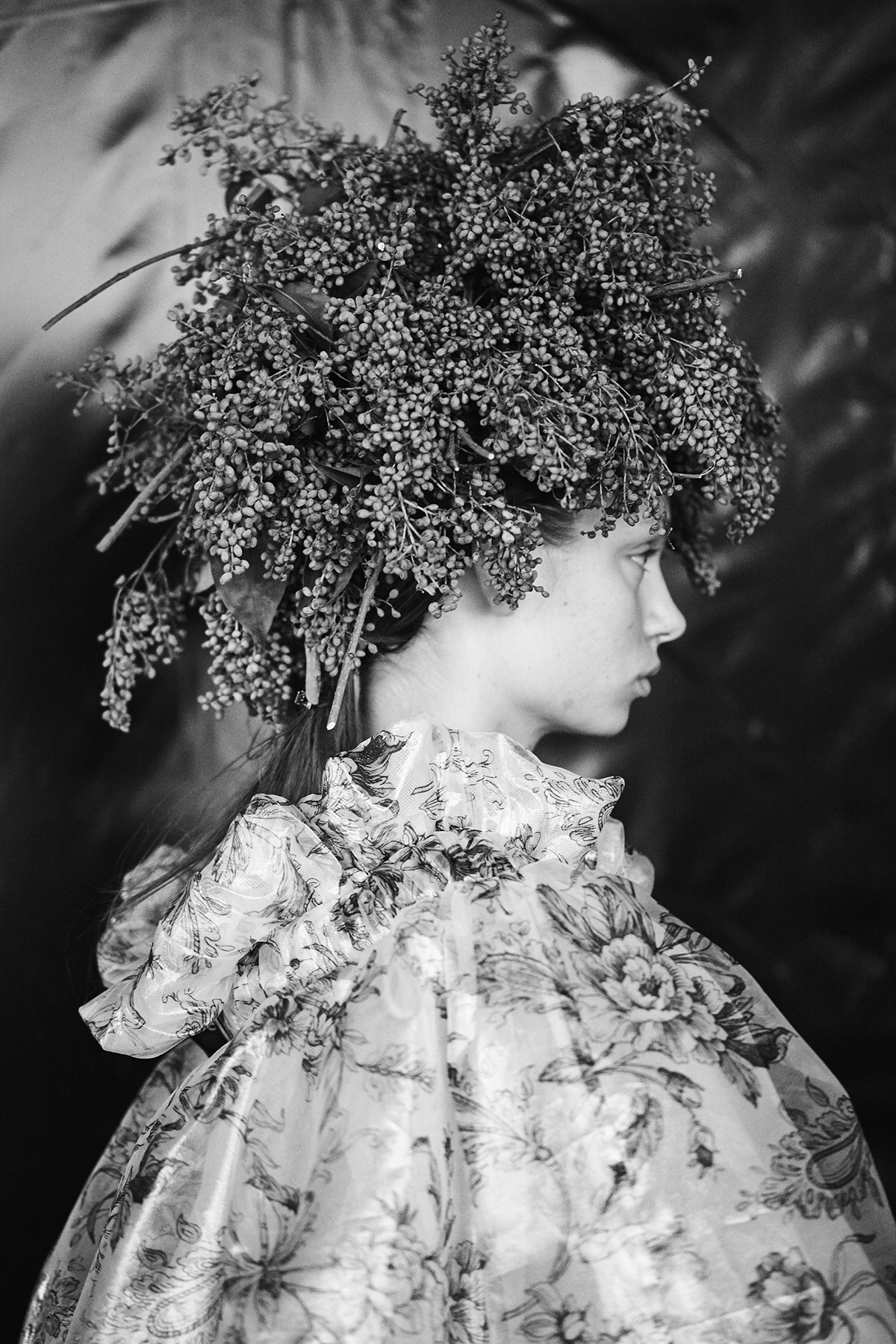
Backstage at the SS20 Noir show
These labels and many more invited brands (including Alaia, Dior, Gucci and Balenciaga) are sold through a growing network of Dover Street Market (DSM) retail emporiums that first sprung up, hence the name, on Dover Street in London’s Mayfair. The string of alternative emporiums now stretches to Los Angeles, Tokyo, Singapore, New York and Beijing. In Paris, a dedicated beauty emporium has recently opened. “Risk”, “instinct”, “experience”, “community” – these are all terms that Joffe uses frequently in the description of DSM stores that were originally inspired by Kensington Market, a cult underground streetwear market in 1970s London. The privately owned company now has a turnover of hundreds of millions of dollars.
Read more: Film director Armando Iannucci on David Copperfield & Fleabag
“As all others designers of the company, Ninomiya works freely, without constraints,” says Joffe. “He respects Rei’s work a lot and Rei respects his creations, too. The relationship is all based on mutual values. Rei trusted him from the beginning, as I do. We let him be free and Comme des Garçons is proud of what he achieves”. Joffe adds, “He is offering his vision linked to the world he is living in. I don’t know what he has in mind during his creative process as we never know what each is doing in advance.” The CdG collective is essentially an ecosystem and operates in contrast to the corporate micro-controlled worlds of LVMH or Richemont.
But then Kawakubo set the template early on. “I have always pursued a new way of thinking about design by denying established values, conventions and what is generally accepted as the norm. And the modes of expression that are important to me are fusion, imbalance, unfinished, elimination and absence of intent,” says Kawakubo at the time of The Met monograph show ‘Art of the In-Between’ in 2017. The biker jacket-wearing designer, now 78, named her own label after a Françoise Hardy song lyric. Kawakubo sees CdG as a guild of highly skilled designers, fabric experts and pattern cutters. Andrew Bolton, the Wendy Yu Curator in Charge at The Met’s Costume Institute, calls this play between creativity and commerce an example of what Andy Warhol dubbed “business art”. “Rei Kawakubo works in the fashion system but on her own terms. It is a much more elegant way to disrupt,” says Bolton.
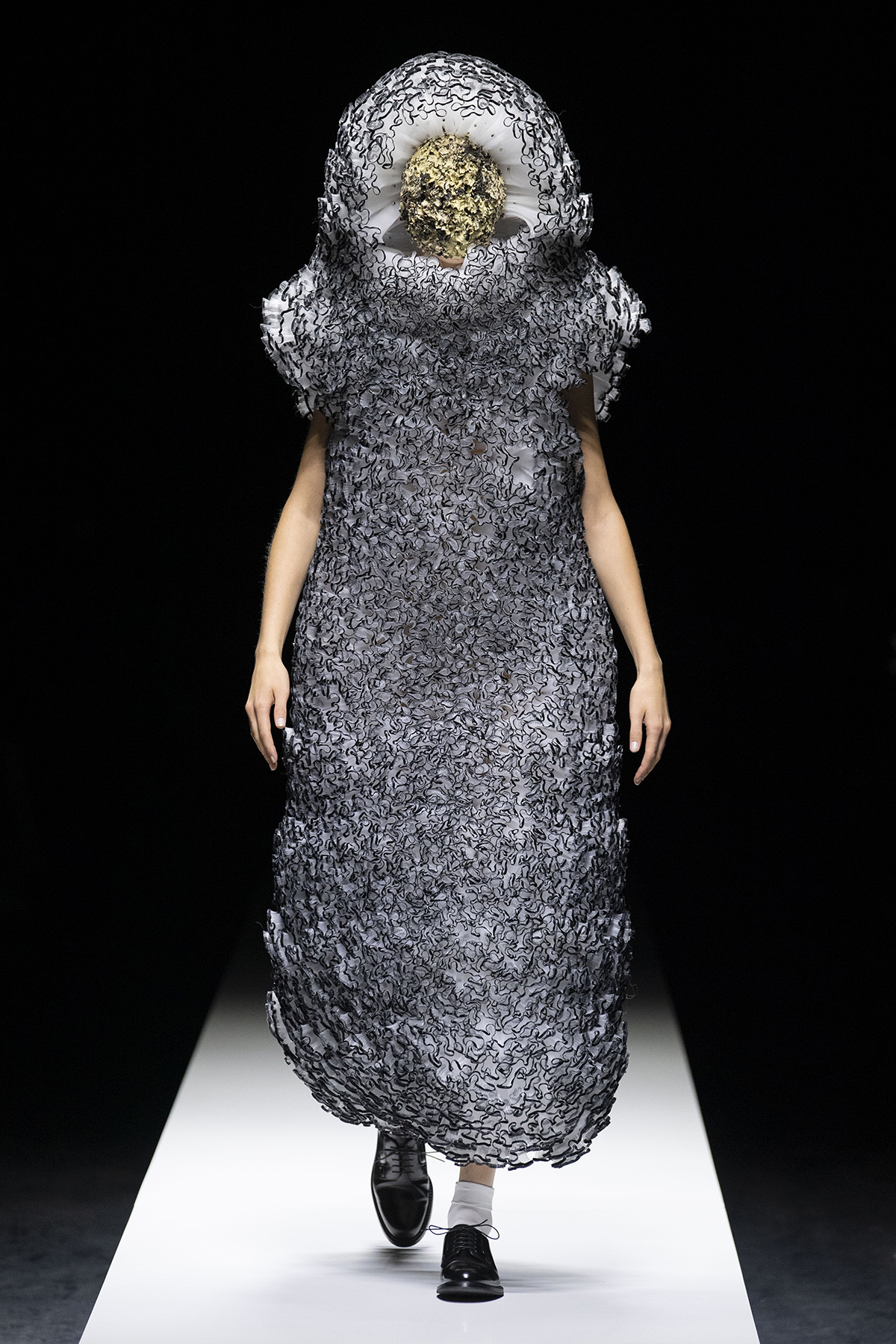
Another look from the SS20 Noir collection by Kei Ninomiya
Yet while the creativity on the catwalk is unsurpassed, what CdG does exceptionally well is ‘declining’ those ideas into wearable clothes. At the core of the Noir collection are cropped leather and faux leather jackets with intense detailing such as weather quilting or chains, and ruffled slip dresses and skirts, and sheer jackets, all with an elegantly rebellious, mischievous edge. The collection sells worldwide in avant-garde retailers such as Leisure Centre in Vancouver as well as Net-a-Porter. “Noir always puts on an incredible spectacle and although trends are always changing and evolving, Noir maintains its values,” says Libby Page, senior fashion market editor at Net-a-Porter. “Ninomiya is good at taking the idea from the runway and translating it into more commercial pieces in tulle and leather. The tulle tees are always a hit.”
Fans of Molly Goddard tulle gowns, Simone Rocha’s punkish romance, Sacai’s hybrid design (the label’s founder Chitose Abe is another former employee of CdG), and Martin Margiela would equally appreciate Noir’s puckish charm. All these designers reject glamorous cookie-cutter ideals of femininity and share a love of the colour black. Ninomiya relishes the many different shades of black, and any colours he uses are complimentary, such as the white and verdant greens for spring. The AW Rose collection featured sheer black layers, dried rose headgear, black-mask eye make-up and ruffled petticoat skirts. The parade of models, looking like they had fallen out of a Goya portrait via a Parisian club, offered up a twisted reverie on romance and love.
Noir’s cult reputation is growing apace. Remo Ruffini, CEO of Moncler, invited Ninomiya to create an innovative capsule of down-filled jackets for the brand’s Genius line alongside established players such as Mary Katrantzou and Valentino. But Ninomiya remains pure play and noirishly enigmatic. “Creation is what matters most and I would like to continue that in a sincere way,” he concludes.
Follow Noir on Instagram: @noirkeininomiya
This article was originally published in the Spring 2020 Issue
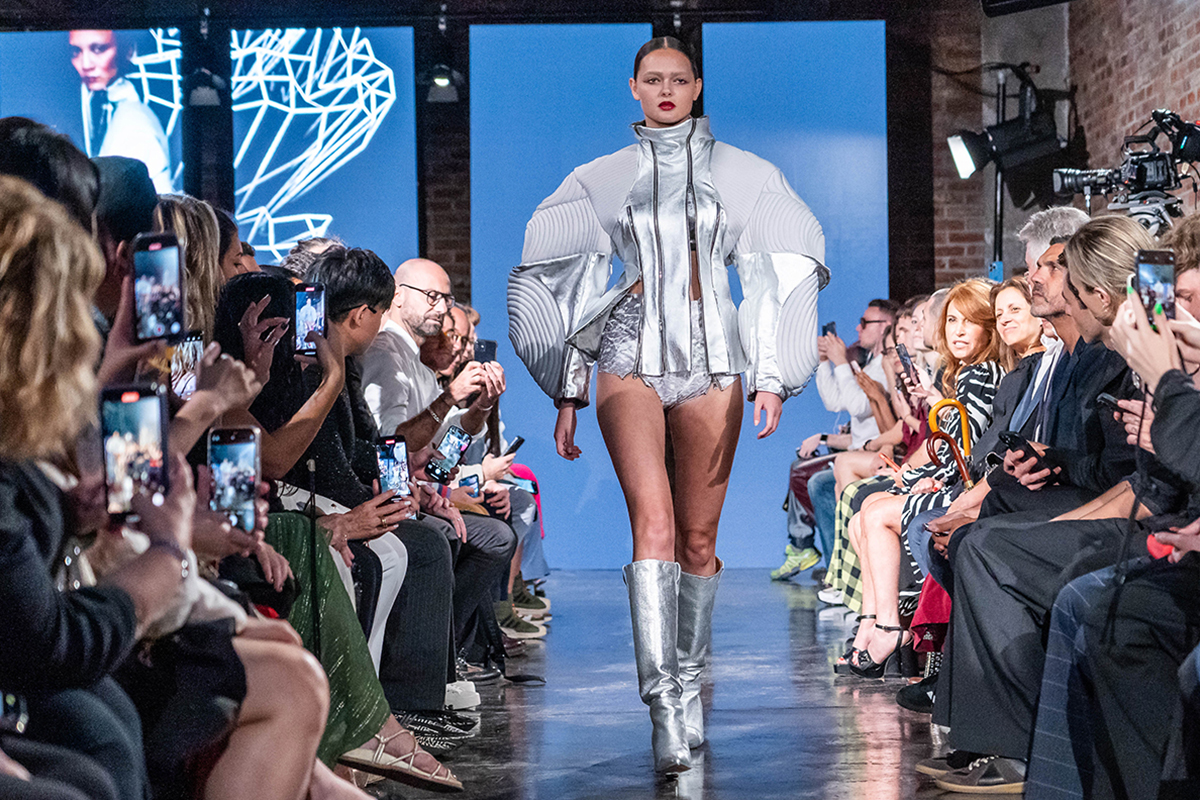
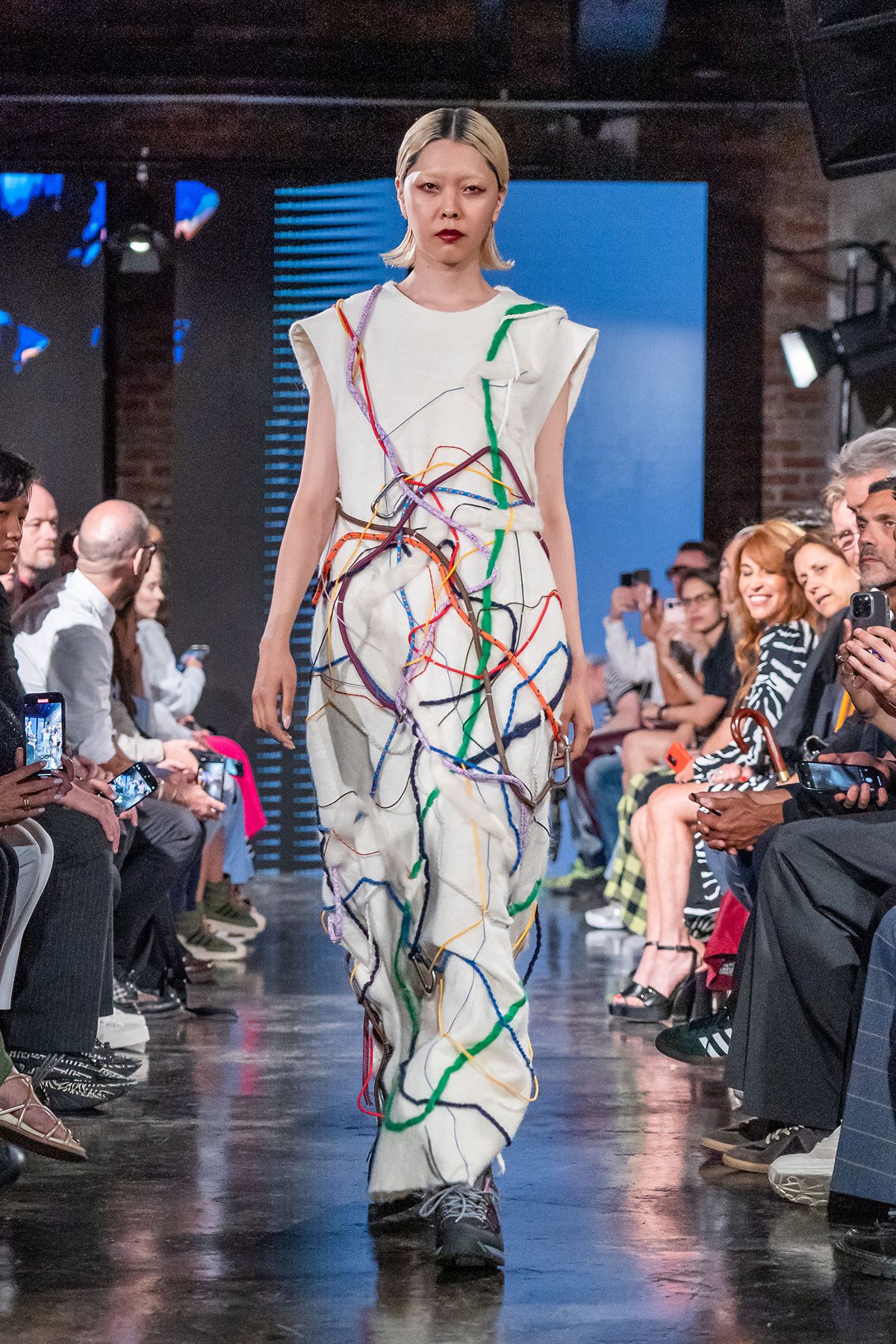
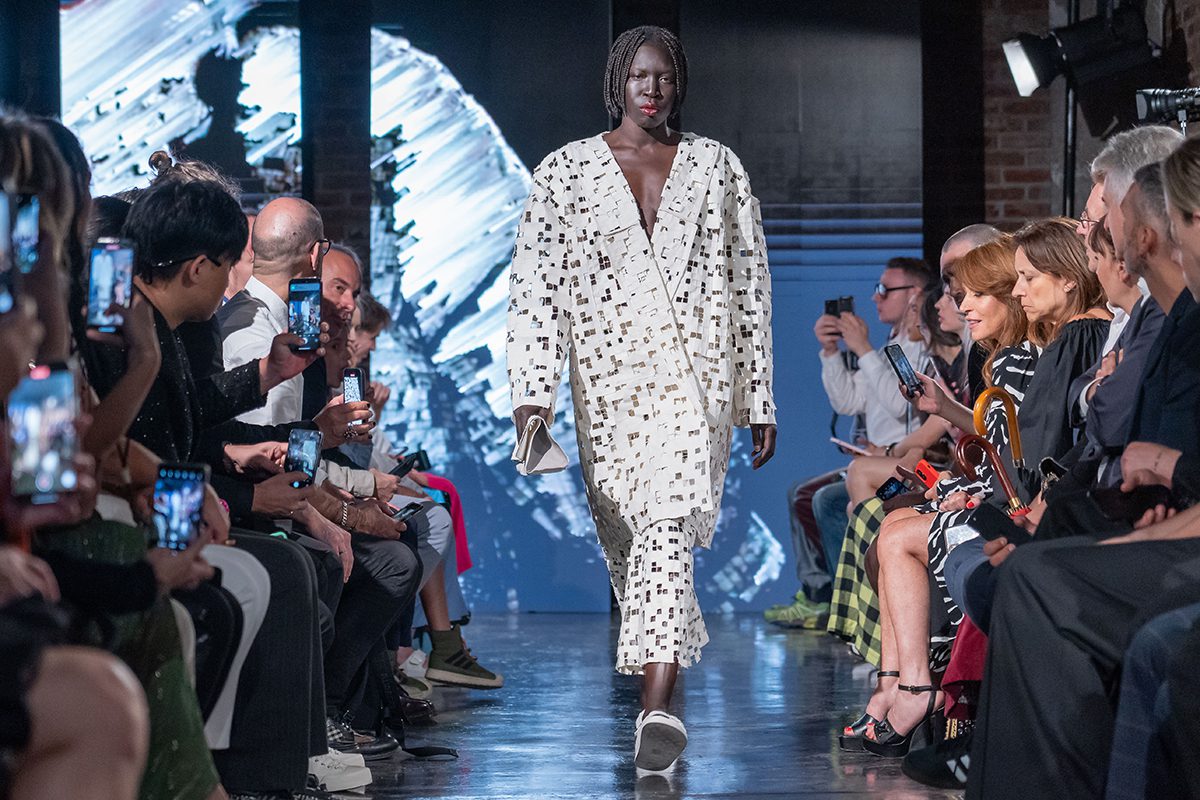
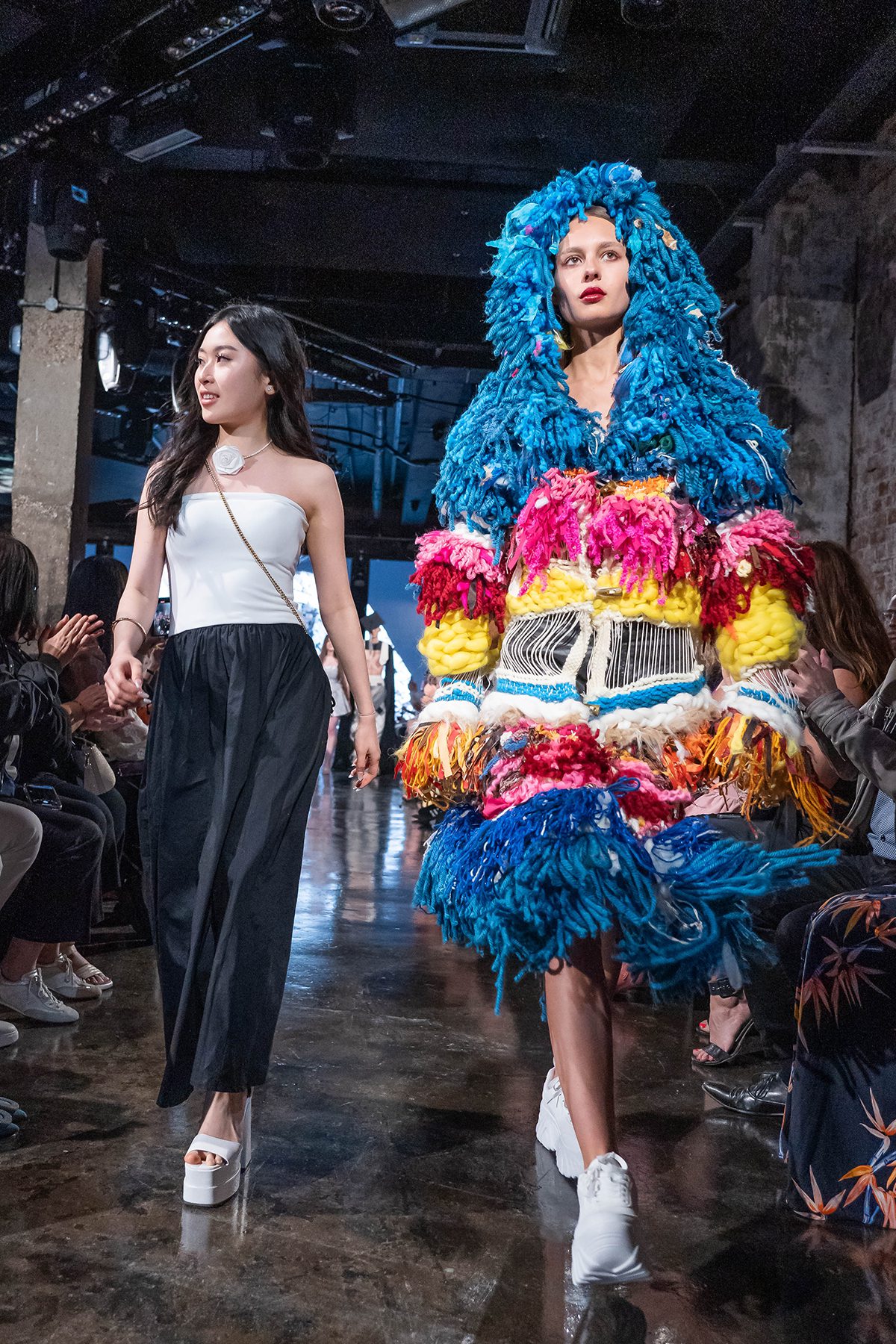
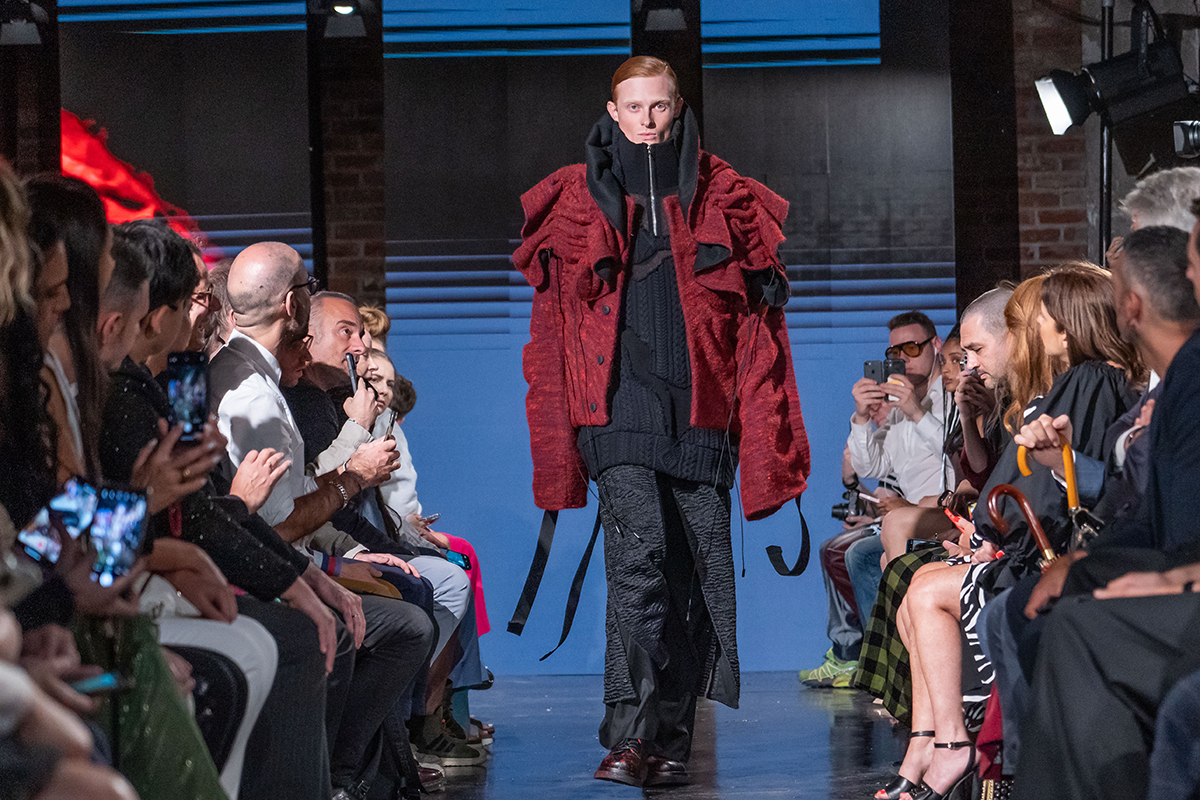
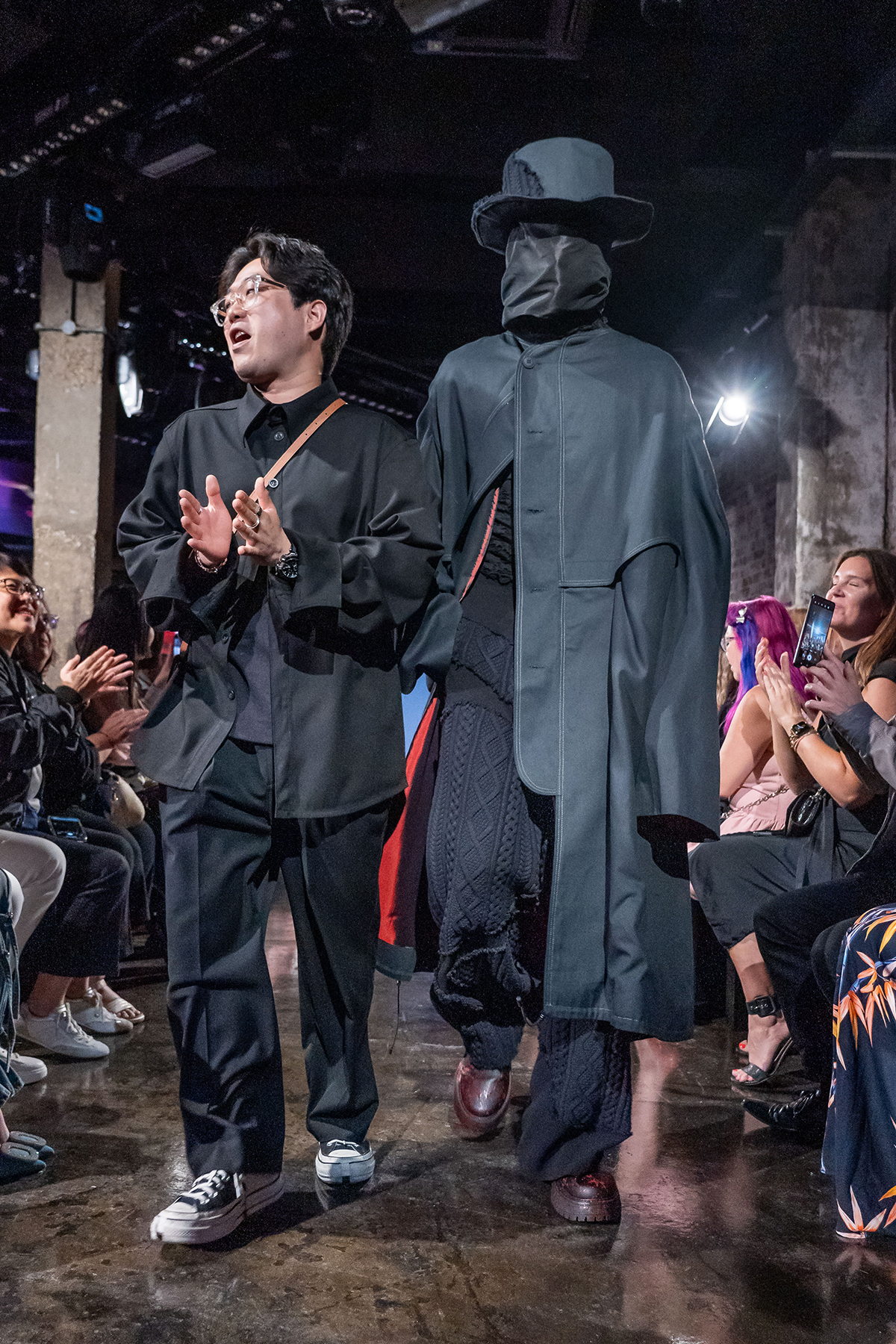

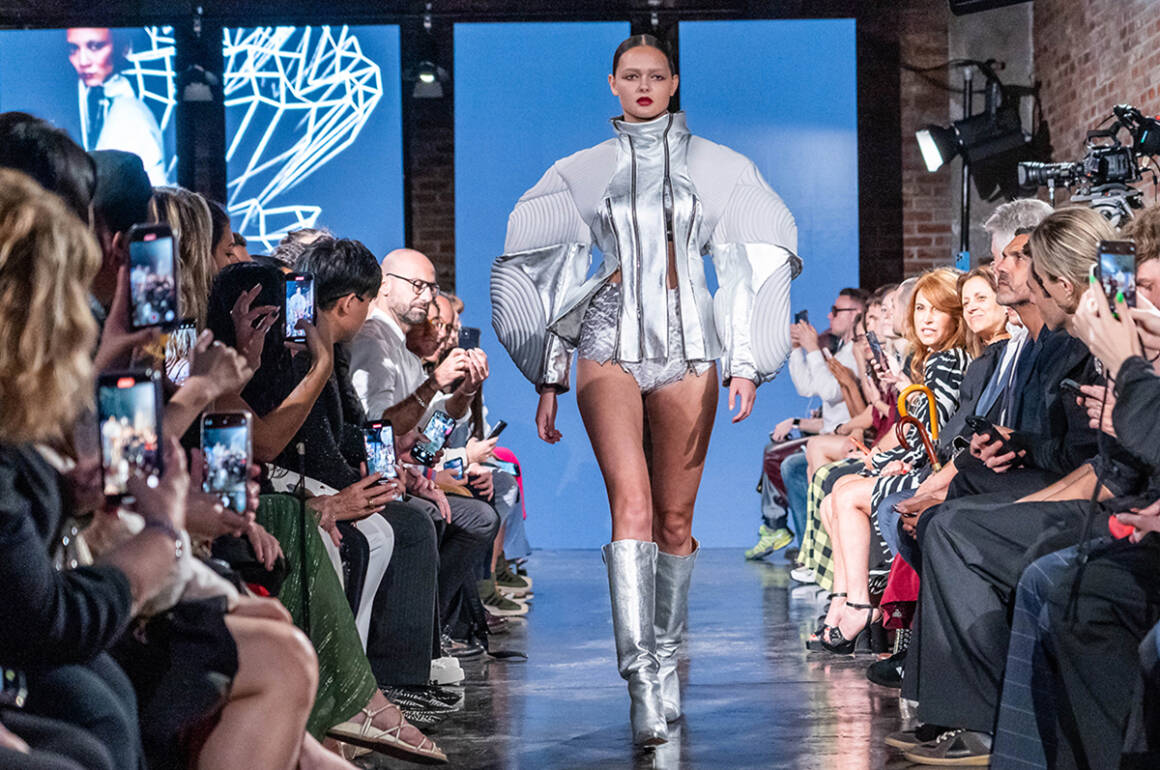
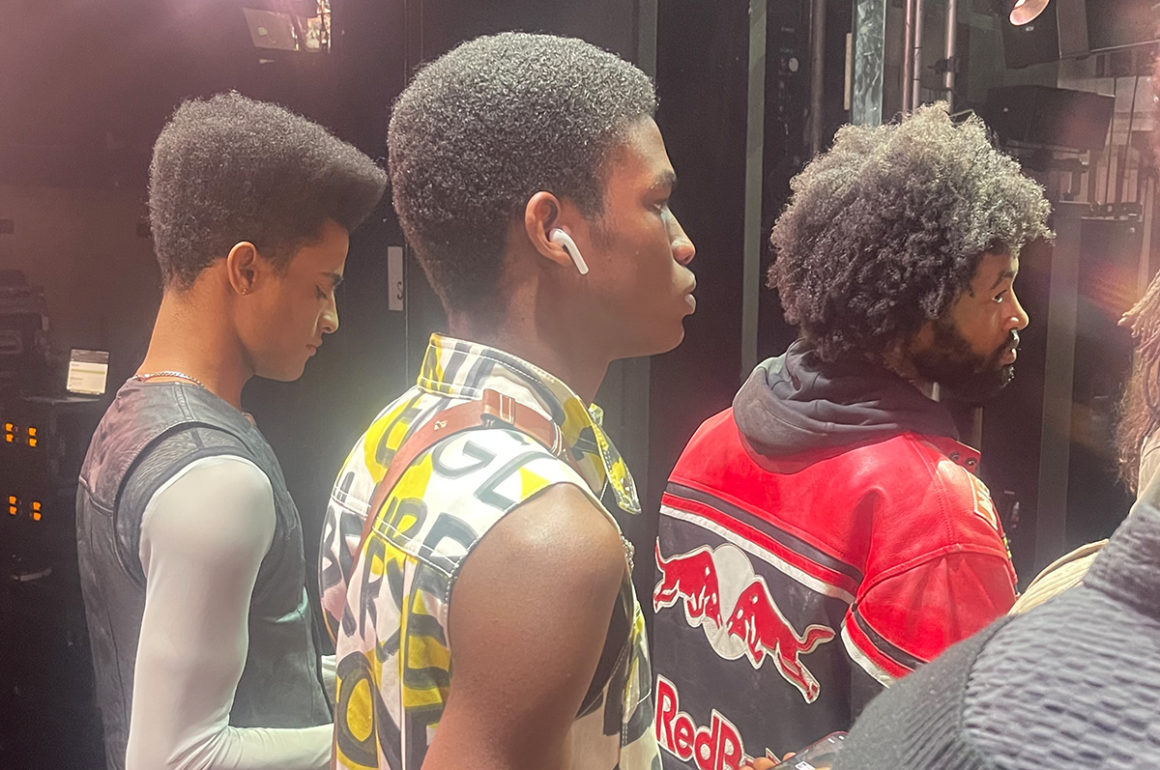
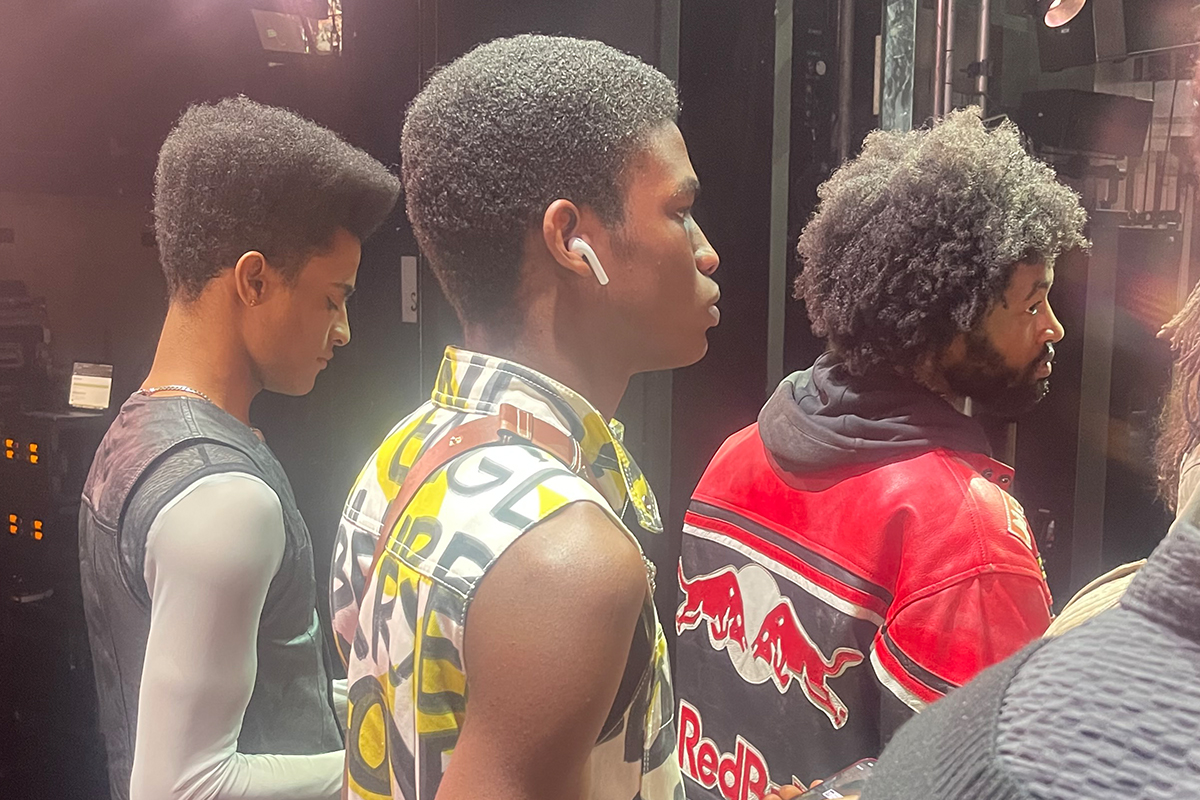
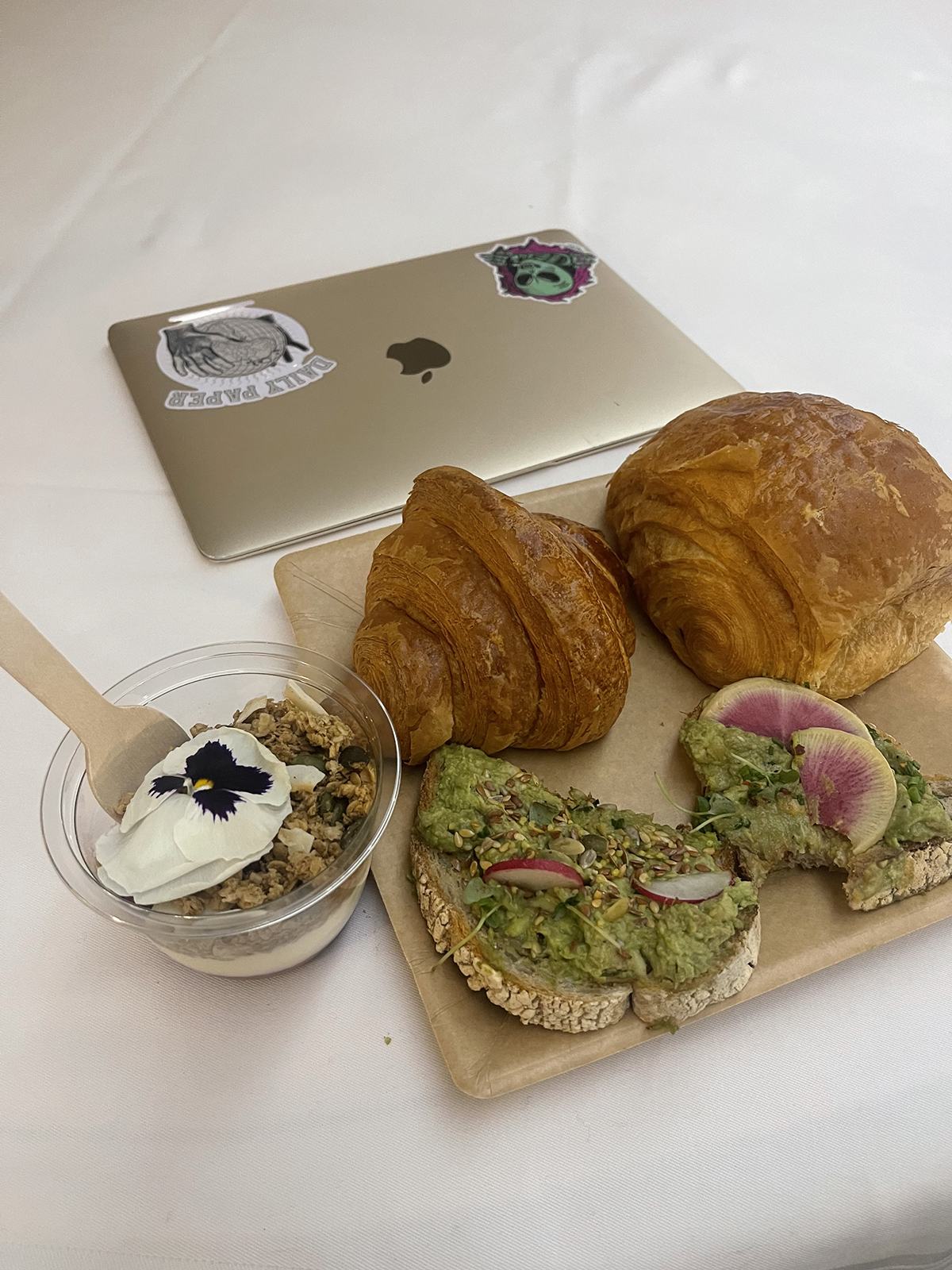
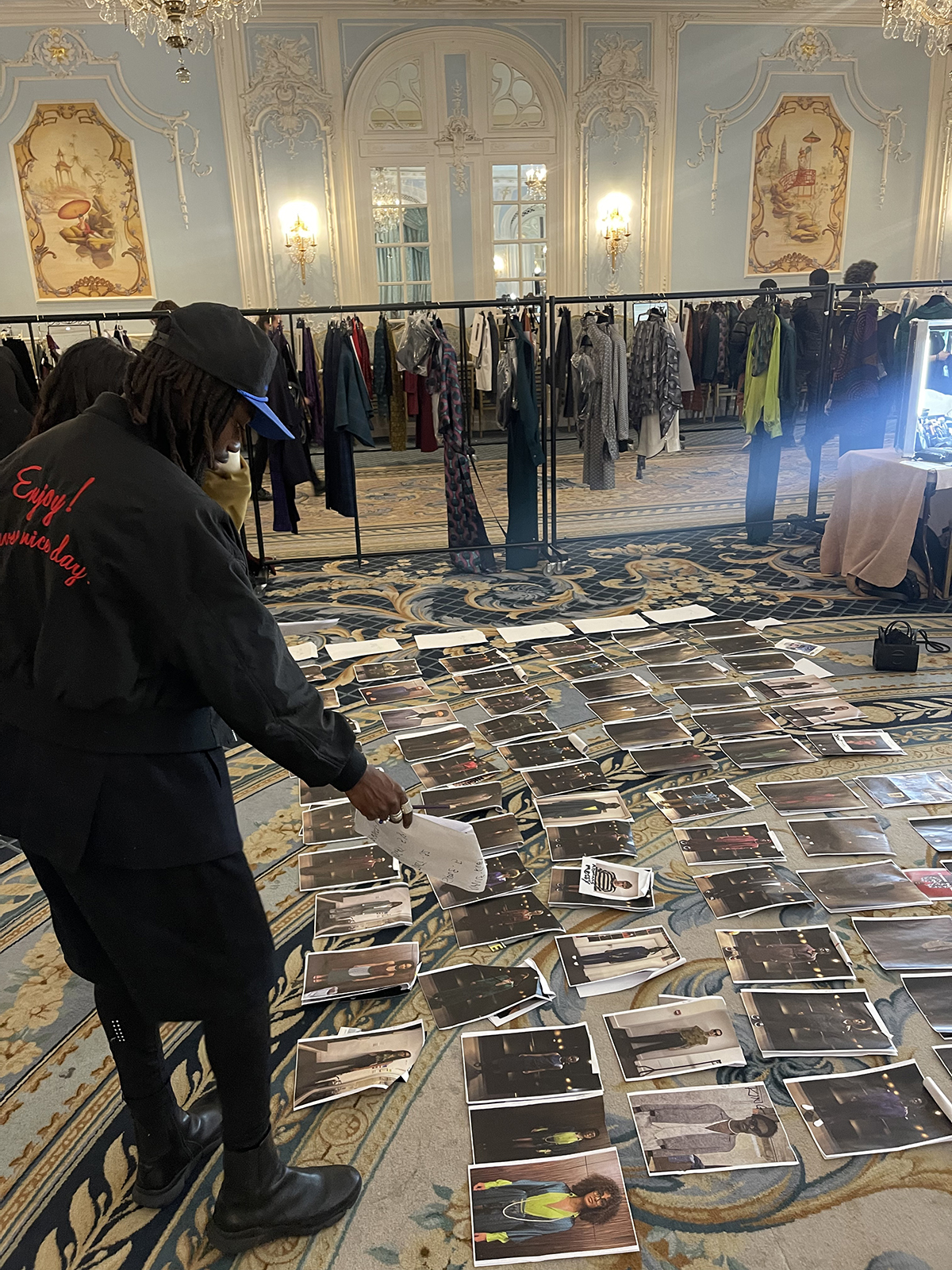
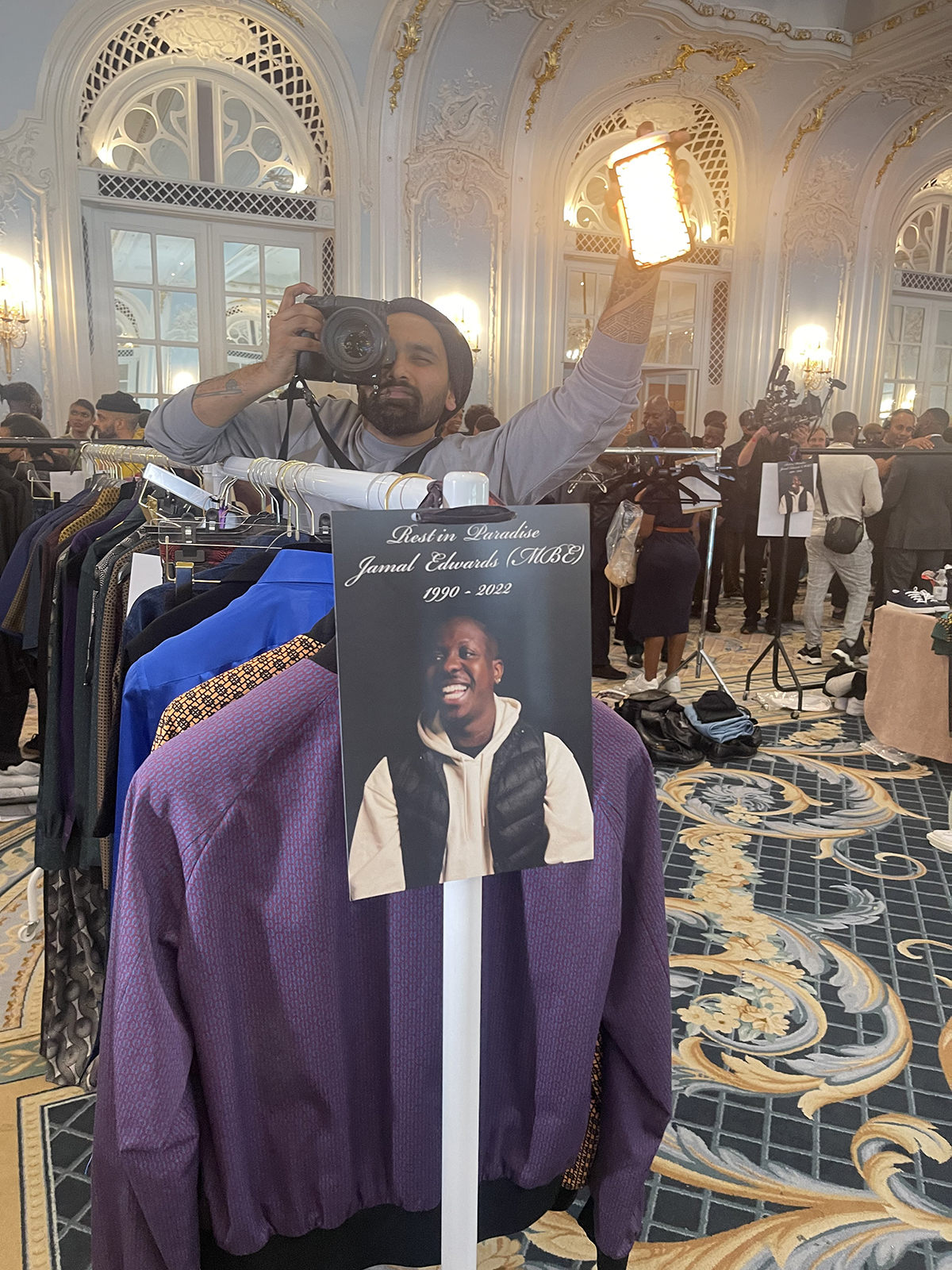
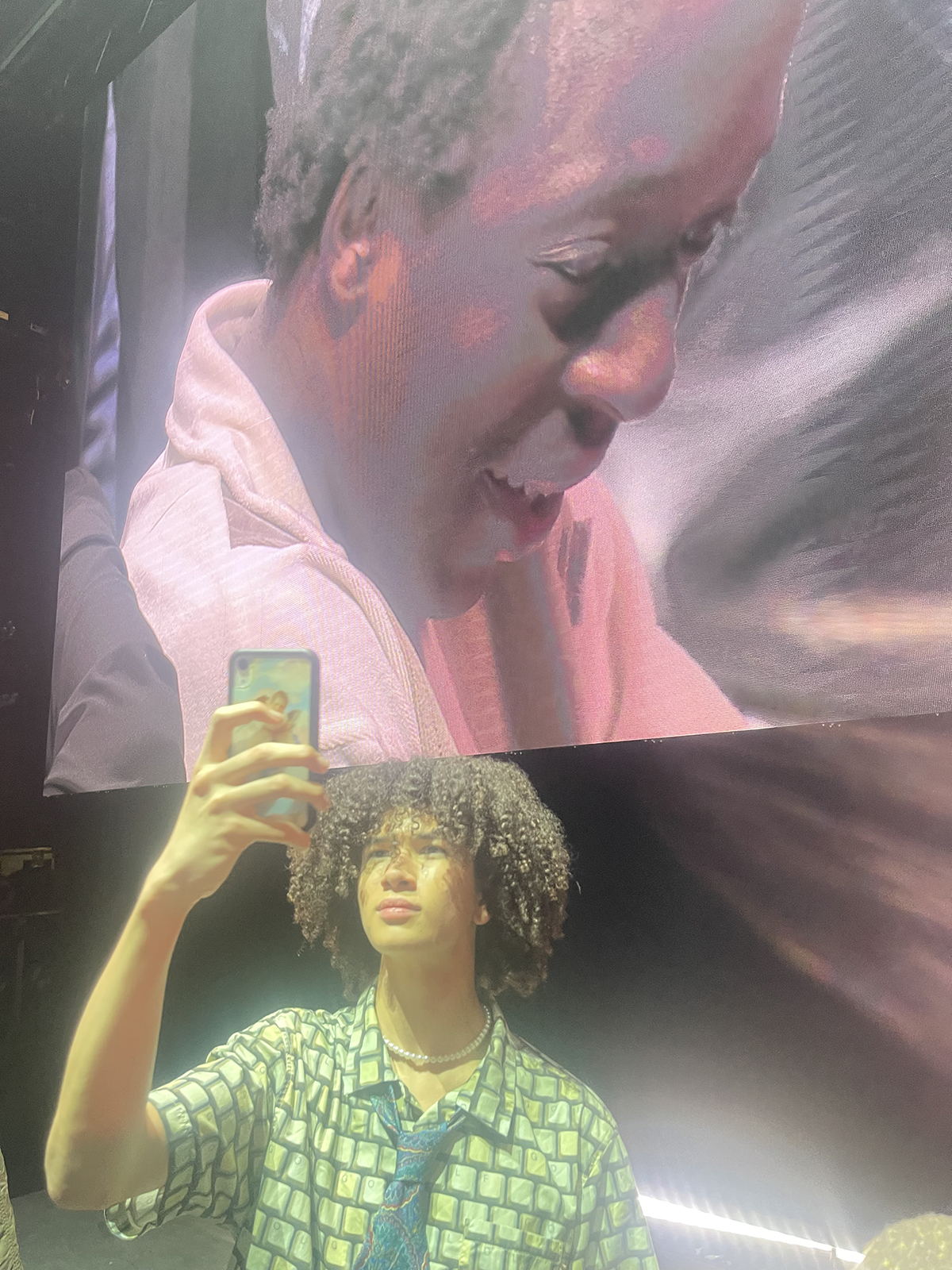
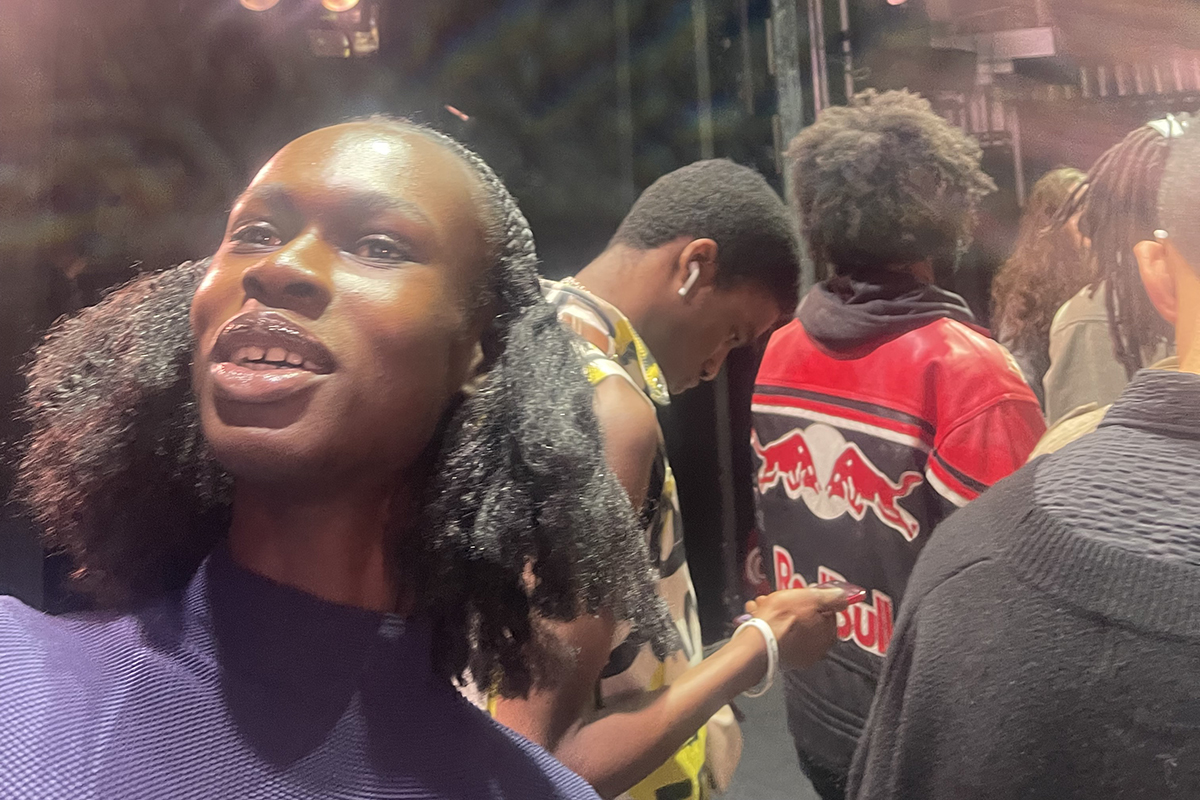

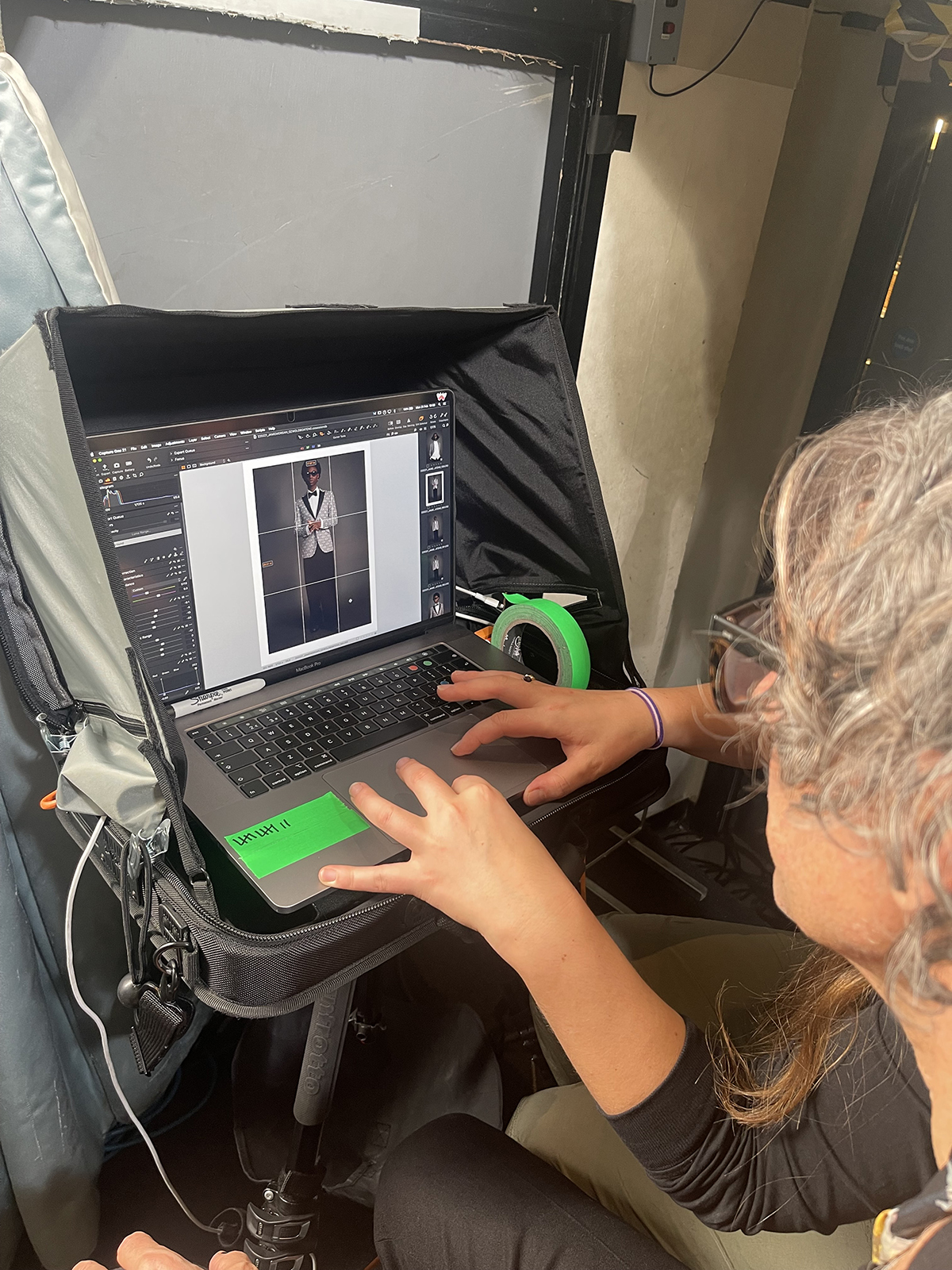
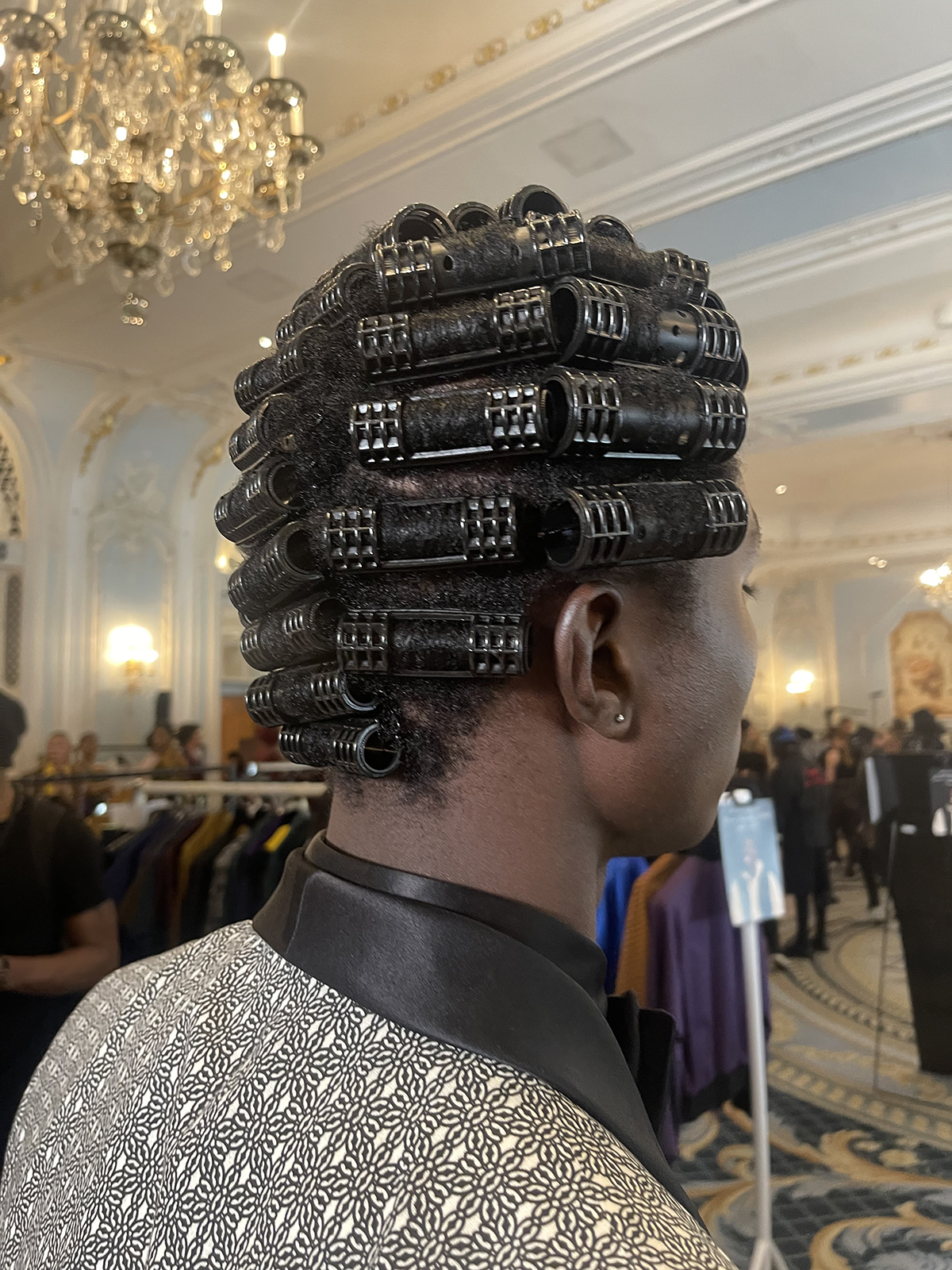

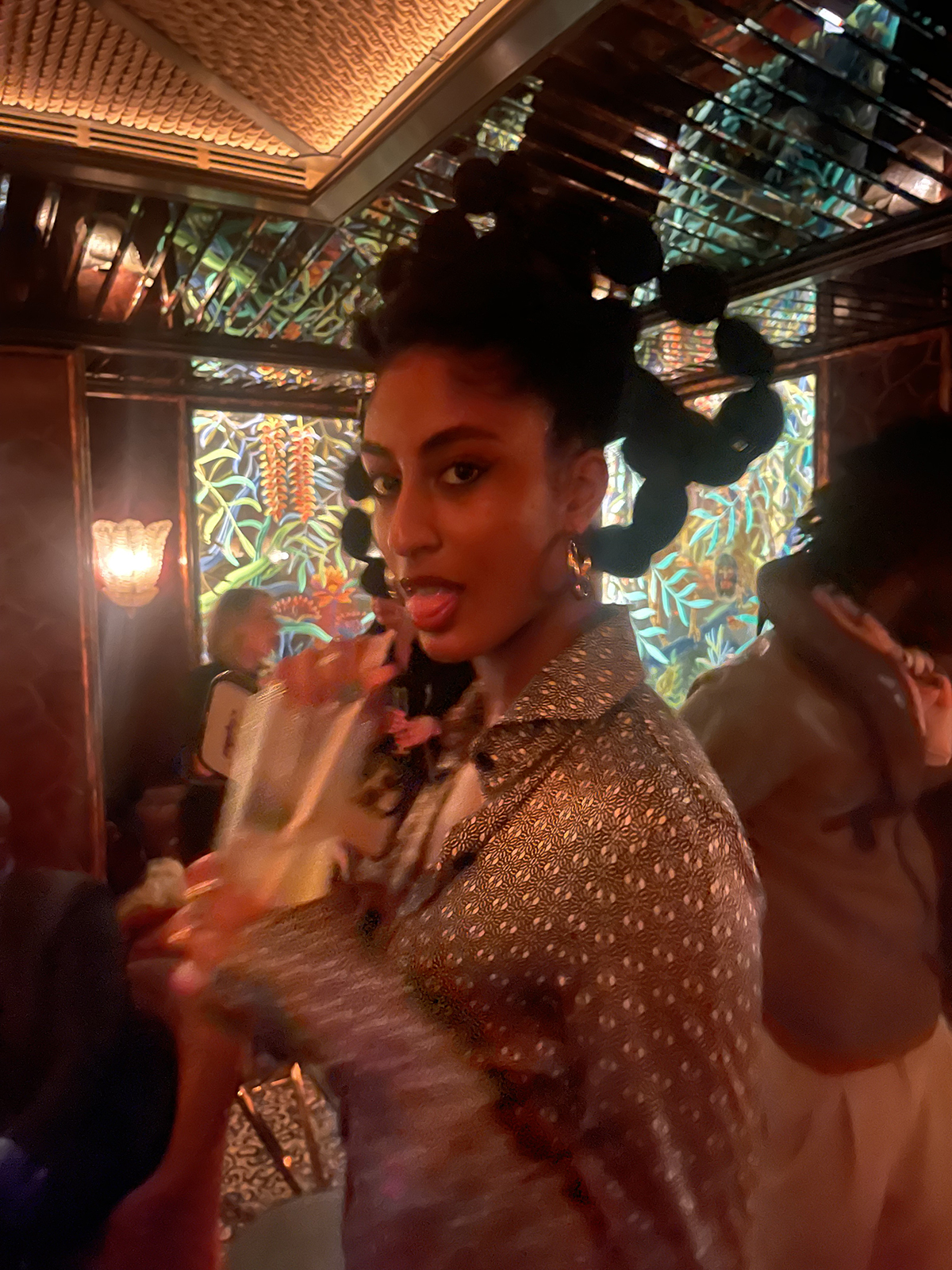

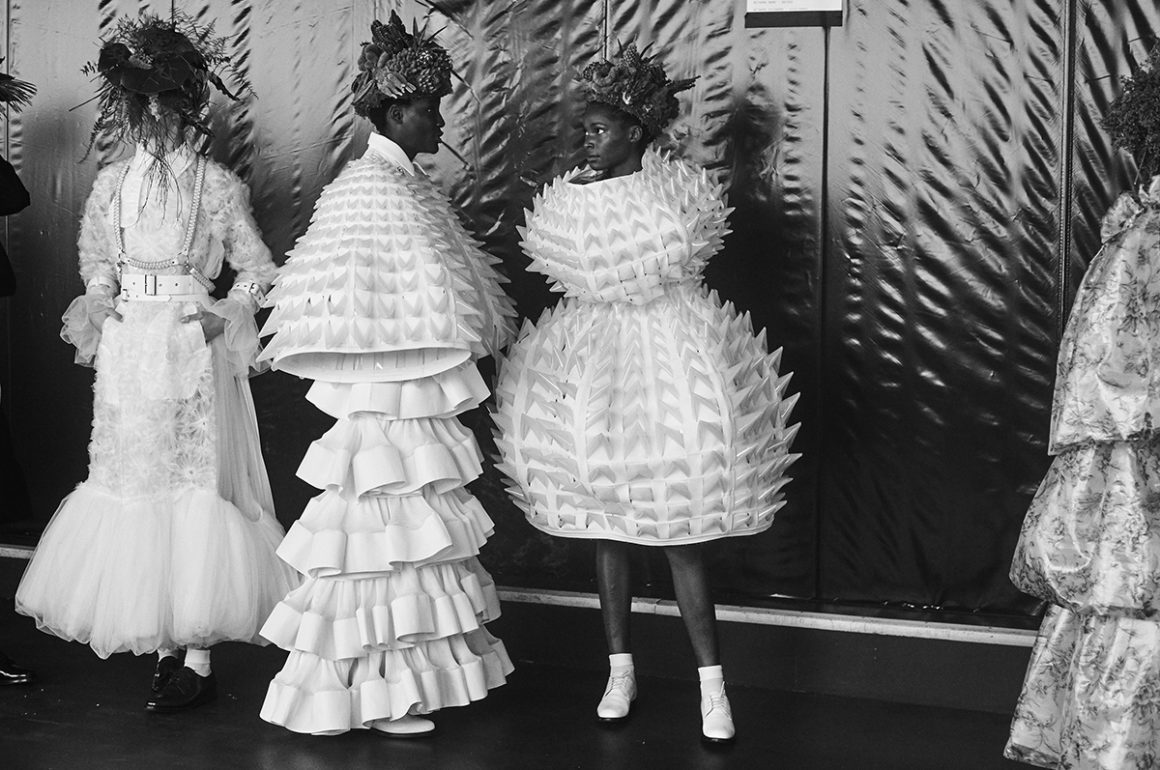












Recent Comments